Planning Board Unanimously Recommends All Potential Land Use Changes
Changes deal with shared accommodations, employee living quarters, state LD2003 and design review process
BAR HARBOR—On Wednesday night, the Bar Harbor Planning Board unanimously recommended for voters to adopt four potential land use ordinance changes, three of which deal with either the state or the municipalities efforts to help with housing.
Each potential change will go to voters on June 11.
The changes deal with potentially expanding employee living quarters and shared accommodations into some rural zoning districts. Another potential amendment deals with the town’s adoption of Maine’s new law 2003, which is “meant to increase housing units statewide by requiring municipalities to remove some regulatory barriers to housing.”
The other amendment is to change the process and standards for design review.
HOUSING OPPORTUNITIES AMENDMENT
There were no public comments on any of the changes except for the ordinance dealing with the new state law, LD 2003. Dessa Dancy worried that a map included in the ordinance, which shows growth areas, hadn’t been approved by the voters.
“This is simply the page from the 2007 Comprehensive Plan that’s currently in effect right now,” she said.
Her concern was that the 2007 plan was adopted, but the growth areas were not adopted. The page is labelled, “Town of Bar Harbor Future Land Use Draft.”
“It says specifically that it’s not a zoning map and the boundaries identified are general and not defined,” she said, stressing that she wanted both affordable housing and for the town to be legally correct.
The 2007 Comprehensive Plan was adopted by the town of Bar Harbor and is considered to be consistent to the Growth Management Map for the State of Maine, said Bar Harbor Planning Director Michele Gagnon. It’s about the future vision for the town, but not zoning, she said. The map is about where growth should be directed.
Planning Board Vice Chair Ruth Eveland said some of the pieces of the state’s plan are consistent with things Bar Harbor has done such as accessory dwelling units, but is worried about the differences in language between the town ordinance and state. She is concerned about further complications about delayed implementation. Delaying, she said, would probably make more problems. The state has a deadline for towns and cities to adopt changes that would be consistent with the state rules. Adjustments can more easily be made after enactment of the changes, Eveland said.
“No piece of legislation that we’re moving forward is perfect,” she said, but she’s comfortable moving it forward and will encourage people to vote in favor of it.
According to a mailer from the town,
“Housing Opportunities: This amendment is necessary to comply with LD 2003 and LD 1706. It is part of a statewide effort to increase housing units by requiring municipalities to remove some regulatory barriers to housing production. It allows for a density bonus of 2.5 times the base density for affordable housing developments in certain areas. It generally allows between two and four housing units per lot where housing is permitted, as well as allowing accessory dwelling units to be located on the same lot as a single-family home, under certain conditions.
“Furthermore, the amendment would delete Bar Harbor’s ‘bonus dwelling unit’ use because LD 2003 requires a comparable but more permissive use, referred to as accessory dwelling units. The amendment would also prohibit dwelling units expressly created under these provisions to be registered and/or used as short-term rentals.”
Eveland asked Gagnon what would happen if the town didn’t adopt the changes mandated by the state.
If someone were to bring an application for housing under the un-approved but state mandated changes and the town did not have that language in the ordinance, Gagnon said, the Planning Board would have to deny the application.
That Planning Board decision would likely be appealed by the applicant, she said.
“I think there could be a lot of money and cost incurred if someone was highly motivated,” Gagnon said.
EMPLOYEE LIVING QUARTERS AMENDMENT
Planning Board Chair Millard Dority said that he’s been on the Planning Board for a number of years and twenty-five years ago, employee living quarters was seen as a need. Now, he said, town staff is finally addressing it, which he has praised.
“The number of times we have given the public opportunities to weigh in (about the potential change) is pretty amazing,” Dority said. The Planning Board has heard from the public about areas to be concerned with, he said, but the town is also in the middle of a housing crisis. It’s predicted that more than 600 homes (houses and apartments) are needed in the next decade.
According to an assessment in 2022, Bar Harbor needs an additional 616 rental units by 2033. And an additional 94 owner-occupied housing units.
The state of Maine itself needs between 76,400 to 84,300 new homes by 2030 to house new and current residents.
Locally, Bar Harbor’s population has increased from 4,820 in 2000 to 5,527 in 2020. It’s projected that by 2038, it will have more than 6,000 residents, an increase of 15%.
Eveland said that the amendment is “a step in the way to make progress,” and she hopes that it will make more people use the use. Employee Living Quarters (ELQ) are allowed in some Bar Harbor zones, but there haven’t been many built.
According to a notice of public hearings, the employee living quarters amendment “would rename the existing employee living quarters use, allowed in 14 districts, to ‘employee living quarters-I.’”
Employee living quarters-I would be allowed in 11 zoning districts. The amendment would also create a new use called “employee living quarters-2,” which would be allowed in 13 zoning districts. Employee living quarters-2 would be subject to Bar Harbor’s general review standards, in addition to certain design standards and density bonuses (lot coverage bonus). The definition of family would also be changed.”
SHARED ACCOMMODATIONS AMENDMENT
According to that same notice for shared accommodations, “This amendment would increase housing opportunities by allowing more types of shared accommodations in 10 zoning districts where that use is not currently allowed. Shared accommodations is a housing type that includes individual rooms with shared dining facilities.”
There was no public comment or board comment for this item. It also was unanimously recommended.
DESIGN REVIEW BOARD PROCESS AMENDMENT
“This amendment would:
Update some properties names in Appendix A — Historic Properties in Design Review Overlay District;
Amend a definition related to signage review;
Simplify the review process for signs;
Adjust the Design Review Overlay district boundaries and area names;
Minimize redundancy by removing Appendix B — Locally Significant Properties in Design Review Overlay District and all reference to it;
Allow more time for the Planning and Code Department to review Design Review Board applications.”
Eveland said that in the interest of being supportive of the work that the Design Review Board is doing, she approves of the recommendation to the voters. All the other members voted similarly.
LINKS TO LEARN MORE
Planning Board page with multiple questions and answers and information and the current land use amendments proposed.





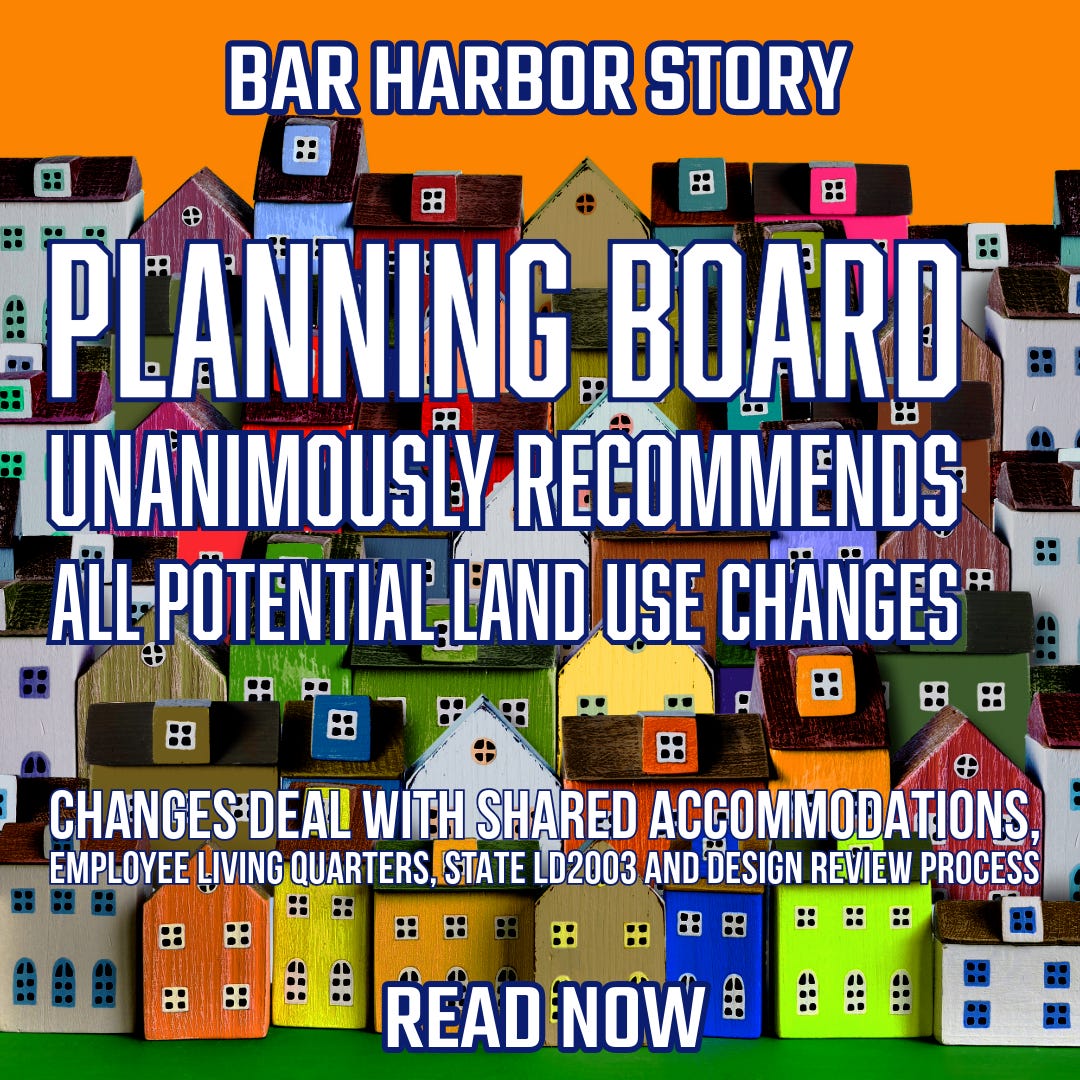
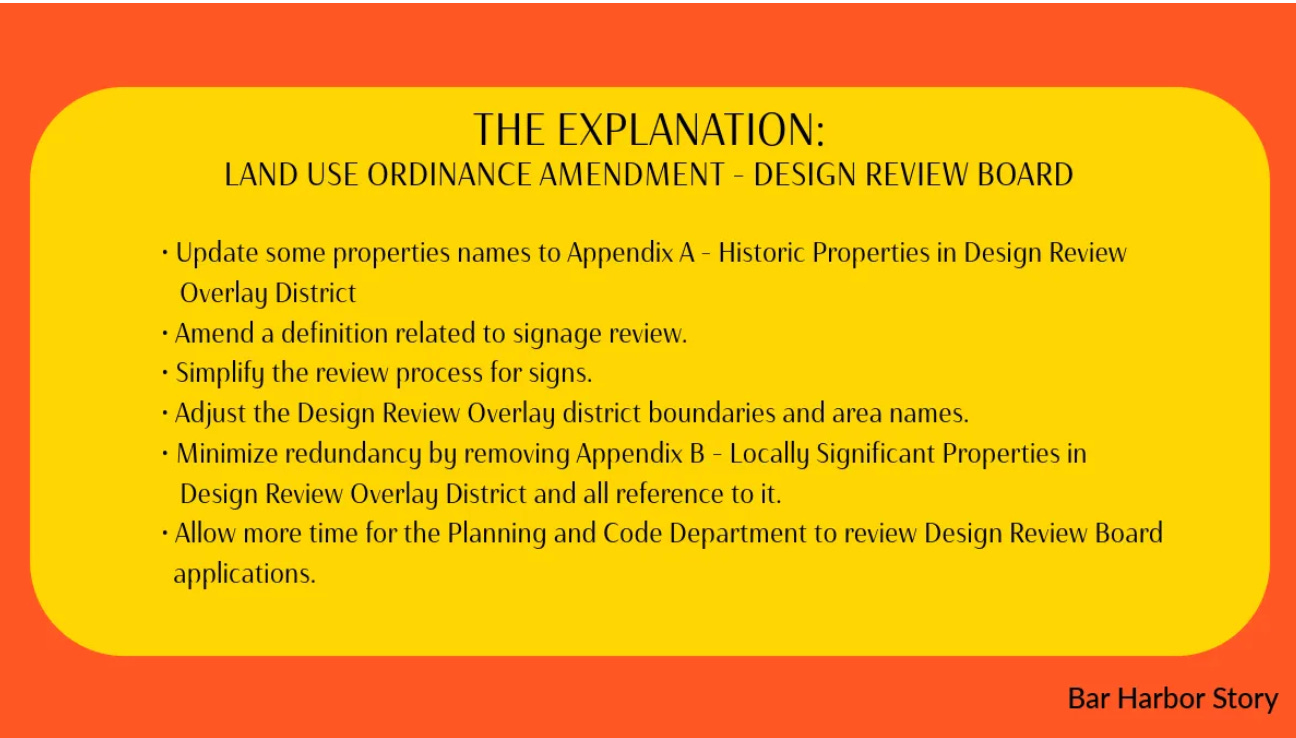
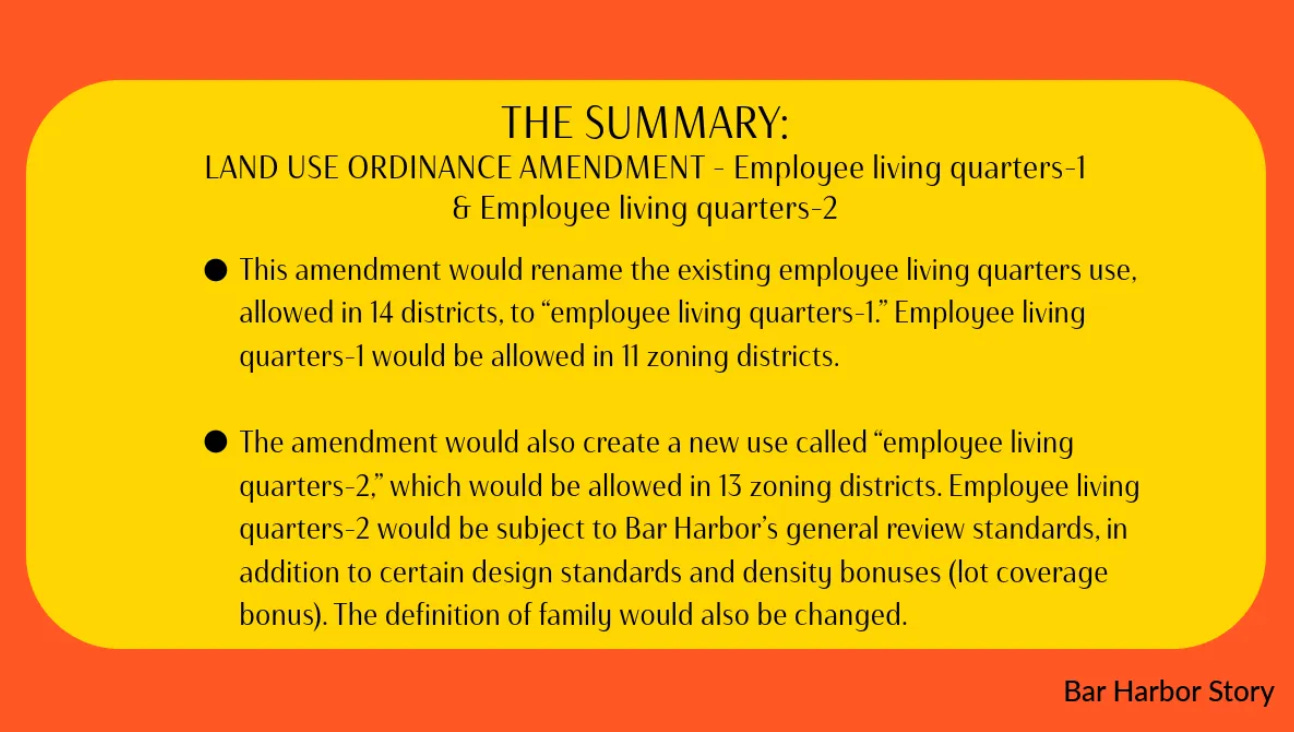

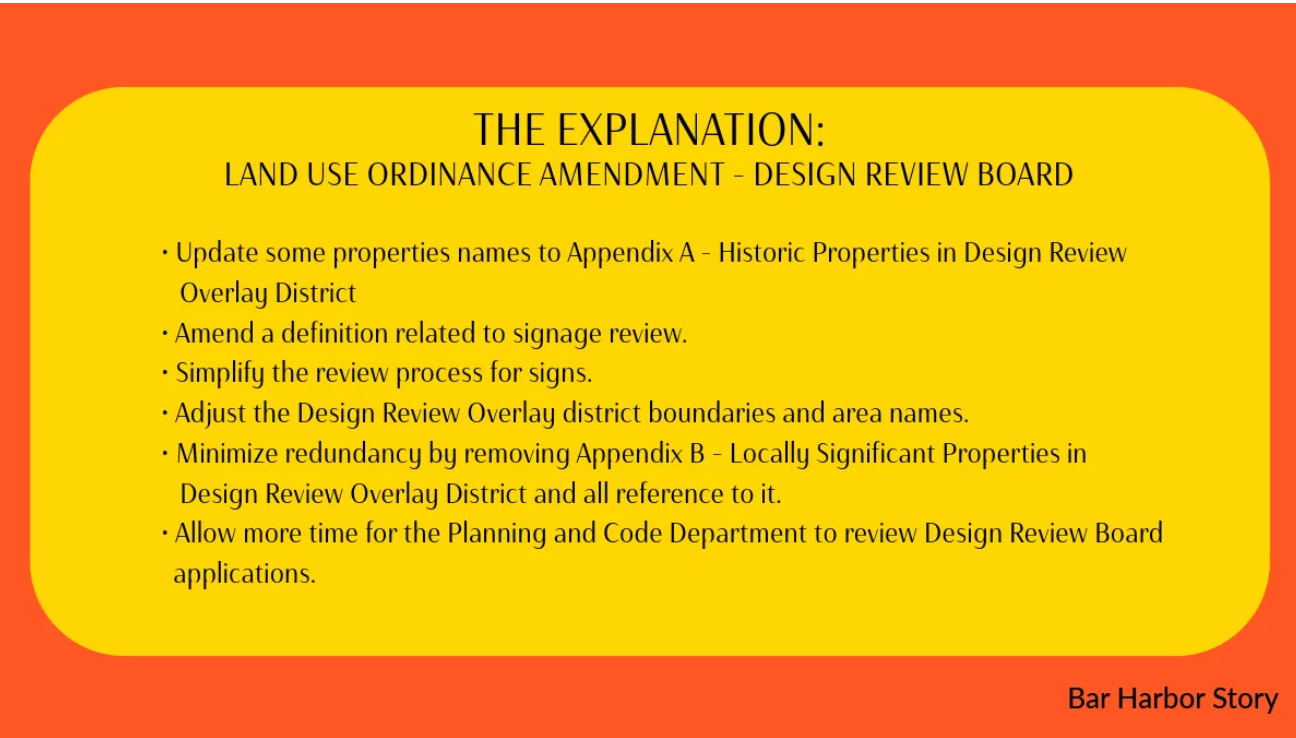

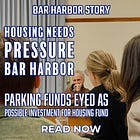
Please trust our beloved librarian on the importance of wording, especially in constructing classifications and in correlating texts. The attention to detail and effort up front is worth it.
The massive built-out-to-the-property-line 45 room 'bed and breakfast' (which looks like a 19th century penitentiary with crenelated battlements and guard tower) next to the municipal building should be a constant reminder to officials of how greed driven developers will exploit every loophole they can grab on to. And then try to grab town property (sidewalks in this case) if they are permitted to. Yikes.
With all of this talk about growth in BH and what is being proposed to accommodate it….has anybody asked if we actually want major population growth here or whether or not it’s environmentally responsible to do so? If said growth happens, can natural resources and public infrastructure handle it? With the town stretched beyond its means, can we afford bolstering infrastructure (town water/sewer) outside of town? Who are they? Do they work on the island or are they just people that desire to live here? Is there any work on the island for them? If so, are they jobs that can sustain the cost of living here? The term affordable housing and crisis has been tossed around pretty willy nilly and I’m admittedly kind of confused. Fairly open ended but could someone at least ballpark a price for affordable housing? Can someone identify who this crisis is affecting? I don’t see much if any of a homeless population on the island. I would think it would be prudent to have these questions explored and defined before jumping the gun on land use changes. Unintended consequences could be devastating.